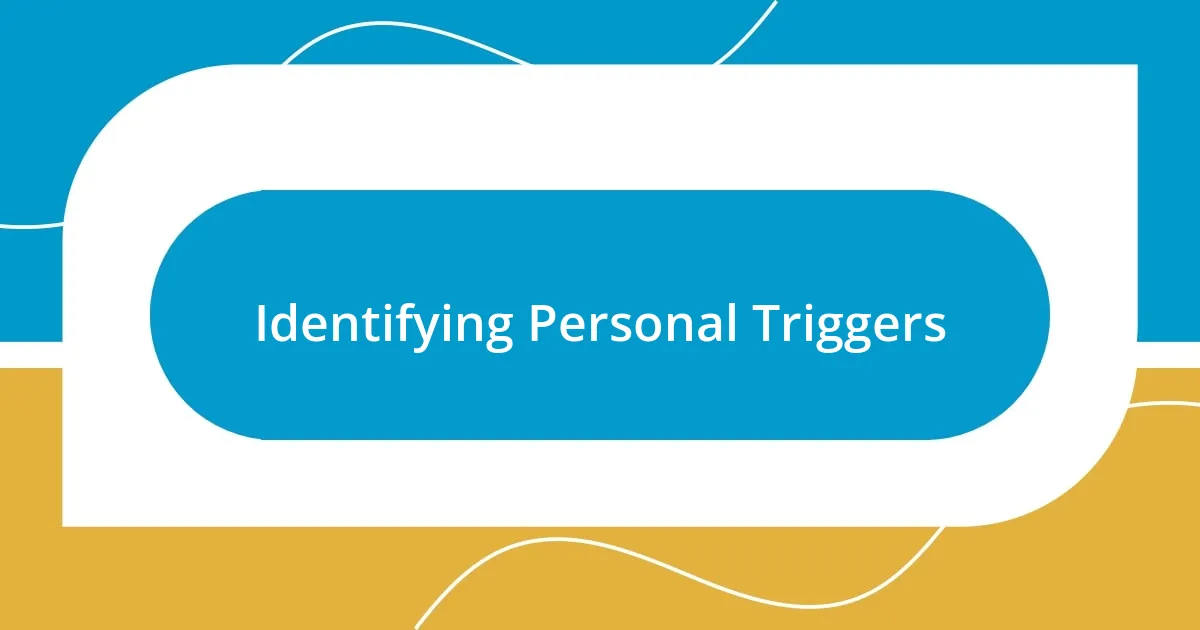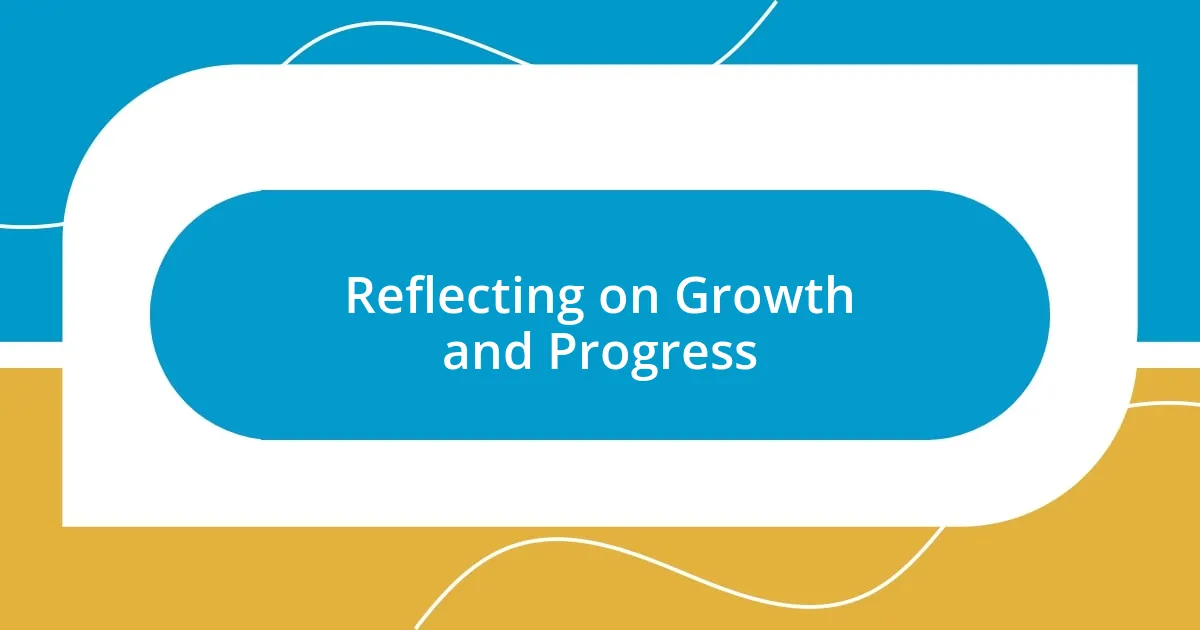Key takeaways:
- Creative blocks often stem from internal pressures such as self-doubt, high expectations, and comparison to others.
- Identifying personal triggers and implementing strategies, like setting aside dedicated photography time, can effectively combat creative stagnation.
- Experimentation in photography—trying new techniques and embracing spontaneity—can lead to unexpected growth and joy in the creative process.
- Reflecting on past work allows artists to recognize their progress and evolving unique voice, transforming challenges into learning opportunities.

Understanding Creative Blocks
Creative blocks in photography can manifest in various ways, leaving us feeling frustrated and uninspired. I remember a time when I had all the gear and the vision, yet every attempt to capture something meaningful ended in disappointment. Have you ever felt that tension between what you want to express and the inability to translate it into a photograph?
These blocks often arise from internal pressures—we may set overly high expectations for our work or fear judgment from others. For instance, I once avoided sharing my photos at a local gallery for the simple reason that I thought they weren’t “good enough.” It’s a familiar battle: the desire for perfection versus the need for authenticity. How do we find that balance?
I’ve come to realize that understanding our creative blocks often means confronting our emotions tied to self-doubt and fear. I sometimes journal my thoughts when I hit these walls, which helps me recognize patterns and triggers. Isn’t it interesting how simply acknowledging these feelings can loosen the grip of creative paralysis?

Identifying Personal Triggers
Identifying personal triggers requires a bit of introspection. Over time, I’ve discovered that my creative blocks can often be traced back to specific situations or feelings. For example, I noticed that whenever I feel overwhelmed or stressed about life outside of photography, my ability to create diminishes. I began to jot down my feelings before shooting, and soon enough, I could see a pattern emerging. It’s surprising how external stress can impact our artistic flow, isn’t it?
In my experience, comparing myself to other photographers has also been a significant trigger. There was a phase when I constantly scrolled through social media, feeling inspired yet inadequate. I remember one project where I put off shooting entirely because I felt that my style wouldn’t measure up to those I admired online. Recognizing that this comparison was a roadblock allowed me to refocus on my unique perspective, ultimately enhancing my work.
I believe that understanding the nuances of personal triggers can empower us as artists. It’s not just about identifying what holds us back; it’s about transforming those insights into motivating forces. After a few sessions of reflecting on what specifically stifled my creativity, I began to implement strategies to counteract these triggers, such as setting aside specific times to shoot when I felt calm and present. These small shifts in my approach not only cleared my creative clutter but also rekindled my passion for photography.
| Trigger | Impact |
|---|---|
| External Stress | Reduces creative flow |
| Social Media Comparison | Leads to feelings of inadequacy |
| High Expectations | Creates pressure and fear of failure |

Techniques for Breaking Stagnation
When I find myself in a creative rut, I employ a mix of techniques to reignite my passion for photography. One of the most effective methods I’ve discovered is changing my environment. For instance, I once felt completely uninspired while shooting in my usual spots. I decided to visit a local park I hadn’t explored before. The fresh scenery sparked new ideas, and I returned home with a renewed sense of creativity. It’s amazing how a simple shift in location can stimulate the imagination.
- Try a New Location: Explore unfamiliar places to stimulate creativity.
- Set Small Goals: Instead of aiming for perfection, focus on capturing just one good shot.
- Experiment with Different Techniques: Whether it’s changing your camera settings or playing with lighting, variations can lead to unexpected results.
- Schedule Regular Breaks: Stepping away for a day or two can refresh your perspective and creativity.
- Join a Photography Group: Sharing experiences and feedback can reignite enthusiasm and improve skills.
Another approach that has worked wonders for me is engaging in creative challenges. For a while, I participated in a 30-day photo challenge where I was assigned a prompt each day. At first, I felt a wave of anxiety wash over me—what if I didn’t measure up? But I pushed through those feelings, and much to my surprise, I found that it forced me to think outside the box. Each prompt pushed me into a new realm of creativity, allowing me to discover aspects of photography I had previously overlooked. It felt like a breath of fresh air, reminding me that sometimes, constraints can actually be liberating.

Using Inspiration to Fuel Creativity
Finding inspiration can be a lifeline when creativity feels elusive. I vividly recall a time when I was completely bereft of ideas, and then I attended an art exhibit that changed everything for me. The vivid colors and innovative compositions sparked such a fire within me that I raced home to capture the emotions I had felt. It made me realize how immersing myself in the work of others can ignite my own artistic flame. Have you ever felt inspired just by being surrounded by creativity?
Another strategy I’ve embraced is tapping into the beauty of nature. One particularly dreary afternoon, I took a walk, half-heartedly hoping to shake off the fog of uncreativity. As I strolled through a local botanical garden, I found myself mesmerized by the intricate details of blooming flowers. Those should-be mundane moments turned into spontaneous photo opportunities, and suddenly, I was shooting without a care in the world. Nature has a remarkable way of reminding us to see the world through a fresh lens, doesn’t it?
I also cherish the moments where I connect with other creatives. I remember a late-night coffee chat with a fellow photographer who shared their unique approach to storytelling through imagery. It was enlightening and invigorating, pushing me to think differently. Conversations like this often reveal new perspectives that can become significant sources of inspiration. Have you found that sharing your journey with others enhances your creative spirit? For me, those interactions often lead to a breakthrough, reminding me that collaboration can be just as potent as solitary reflection.

Establishing a Consistent Routine
Establishing a consistent routine in photography has been a game changer for me. I remember a particularly chaotic time when my schedule felt all over the place. I decided to block out dedicated time each week for photography, treating it like an unmissable appointment. Initially, it felt a bit forced, but I quickly realized that this structure not only provided me with reliable time to create, but also turned into a ritual I looked forward to. Have you ever felt that anticipation when you know it’s time to capture moments?
As I honed this routine, I discovered the importance of consistent practice. Each session became an opportunity for growth, allowing me to explore new techniques and styles without the pressure of perfection. For example, on quiet Sunday mornings, I’d grab my camera and wander through my neighborhood. These low-stakes outings transformed into some of my favorite photographic memories. The simple act of showing up, camera in hand, often led to unexpected joys and creative breakthroughs.
I also learned that consistency doesn’t mean rigidity. Some days I’d stick to my usual paths, while on others, I’d venture into new territories, influenced by my routine but still open to spontaneity. In those moments, I recall stopping mid-stroll, captivated by the interplay of light and shadow on a nearby building. It taught me that the key to creativity is a balance between structure and freedom. How does your routine support your creative spirit? I find that a flexible approach can ignite a sense of adventure, making the creative process feel vibrant and alive.

Embracing Experimentation in Photography
Embracing experimentation in photography has opened up entire worlds for me. I recall a day when I decided to play with light and shadow in ways I hadn’t dared before. Instead of sticking to my usual settings, I experimented with long exposure shots in my living room, capturing the trails of light from passing cars outside. The results were nothing short of magical, turning my mundane space into a playground of artistic possibilities. Have you ever taken a leap into the unknown and discovered something extraordinary?
There was also this moment when I got curious about alternative techniques, like double exposures. On a whim, I took a picture of a blooming tree and then layered it with a shot of the cloudy sky. The overlapping images created a hauntingly beautiful effect that I hadn’t imagined. It taught me that sometimes, the act of trying something completely different can unlock hidden gems within my own creativity. But it makes me wonder—how often do we hold ourselves back from exploring new methods, fearing we won’t “get it right”?
I find that the process of experimentation is not just about creating beautiful images; it’s also deeply personal. There are days when a certain photograph fails to evoke the emotions I intended, yet those very failures become stepping stones for the next shot. Each miss is a lesson, urging me not to shy away from risk. Isn’t it fascinating how these moments of trial and error can lead to growth? Embracing experimentation allows me to break free from the confines of perfection and instead, focus on the joy of discovery. What’s your experience with taking creative risks?

Reflecting on Growth and Progress
Reflecting on growth and progress in photography has been an enlightening journey for me. I remember a time when I reviewed older images and felt a sense of disbelief at how my perspective evolved. Each photograph from years past serves not just as a record but as a marker of my progression—visual proof of my evolving skills and creative lens. Have you ever stumbled upon an old photo that made you chuckle or cringe? It’s a reminder of how far we’ve traveled on our creative paths.
One experience that stands out is when I decided to curate a personal portfolio. As I meticulously selected my best work, I noticed not only an improvement in my technical skills but also in my ability to tell stories through visuals. Each image I chose resonated with my journey, reflecting different phases of my creative life. This process made me realize that growth isn’t just about acquiring new techniques; it’s also about discovering my unique voice as a photographer. How do we identify our growth amid the evolving landscape of our artistry?
Now, when I think about my progress, I see it as an intricate mosaic of both triumphs and stumbles. There were days when my shots didn’t turn out as envisioned, but those moments of disappointment taught me resilience. In those times, I learned the value of persistence and how moments of vulnerability can yield deeper connections with my work. Isn’t it fascinating how growth often resides in the uncomfortable spaces? Embracing this reality has shifted my perspective, turning every block into an opportunity for reflection and learning.














